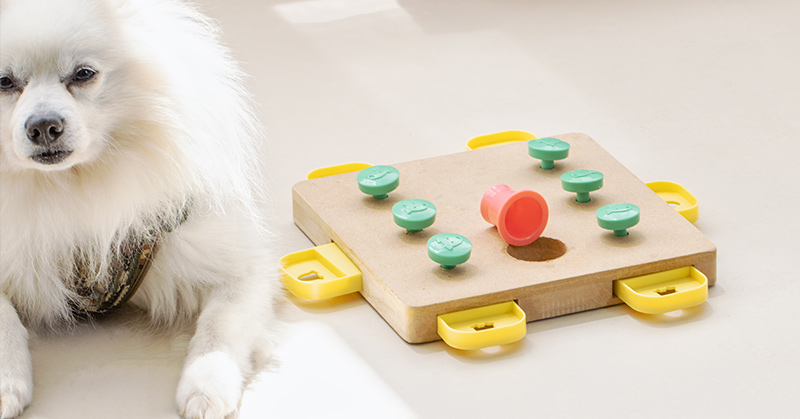The first problem new pet owners may encounter is that their puppy seems restless, despite all the hours of playtime they were given. While exercise is a great way to tire your new little one out, it doesn’t fully stimulate them mentally. Imagine going for a run or swimming every day but you never get to read a book, complete a crossword puzzle, or have an in-depth conversation with another person. It would get boring rather quickly!
Dogs are very intelligent animals that should be taken care of with these attributes in mind. Don’t know where to start? Well, you have come to the right place for enriching your canine companion’s everyday life…
1. Breed Specific Games
If you adopted a purebred dog, they have generations of instincts that were carefully bred for and fostered by fanciers. Not allowing your pet to act on their natural instinct can be very damaging to their mental health and cause them to act out in destructive ways.
If you have a herding dog, such as the Border Collie or the Corgi, they love order in their environment. Take time to learn from a farmer that works with herding dogs about how to tame these wild fur babies and direct towards productive playtime. Teaching your pet how to corral a few exercise balls in the yard is a great way to get their brains thinking!
The same goes for a terrier breed, they like to chase down small rodents so play with small moving toys or rig up a system where they can chase a toy. There are dog toys that are like cat toys with a fluffy thing connected to a string and handle.
Doing research into what your dog breed was originally supposed to do for a job is a great place to get started when trying to find new ways to entertain them.
2. Puzzles
If you look up puzzles for dogs, there is a variety to choose from. Buttons, small doors, sliding contraptions, wobblers, and DIY games are all great ways to keep your pup’s mind sharp.
Toys created specifically to have small crevices in them to hide treats can entertain your pet long enough for you to get some chores completed. The same can be done with items in the house like a tennis ball with an opening or placing treats under plastic Tupperware.
3. Obedience Training
Training your pet with obedience tricks gets two jobs done at once: they get to be mentally stimulated while learning their manners!
Start small by teaching them the basics like Sit, Down, Stay, Come, and Leave It. Keep increasing the level of difficulty with these tricks by adding distractions like going outside, having friends over at the house, or going to the park to teach tricks. Once your canine has a good hold on their basic manners, you can move into doing more complex tricks like sitting between your legs, playing dead, or holding something in their mouth without dropping or eating it.
Your dog has to listen and pay attention to you when given commands, thus keeping all of their attention. By introducing new scenarios, you are challenging the pup to respond in the way they were taught, which requires a lot of brainpower!
4. Language
While teaching your pet how to jump through hoops or keep still to place a treat on their muzzle is crowd-pleasing, teaching them how to distinguish between certain objects can be even cooler. Research has found that dogs can learn up to 150 different words, which gives owners the awesome opportunity to train their pets on how to distinguish between different objects.
When doing this for the very first time, start by having two very different dog toys that your pet really likes. The more different they are, the easier it will be for your pet to tell the difference between the two when asked to bring one to you. It is a matter of naming the two toys differently and conditioning the pup to associate the name with the toy.
Do not get discouraged when you name a red ball “red ball” and you ask your pup to get a red rope, they might bring you a different toy. This is because dogs are color blind!
5. Playing with Others
Playing with other dogs and people is a wonderful way to get your canine companion’s mind working. Dogs are social creatures and learn from other dogs or people through active interaction. By playing with other dogs, your pup will learn dog social cues, how to navigate around grumpy dogs, and learn who not to mess within the pack. And when playing with their owners, it strengthens the loving bond between owner and pet.
Keep Reading: Man Made His Wife Choose Between Her Rescue Dogs And Him – She Picked The Dogs

